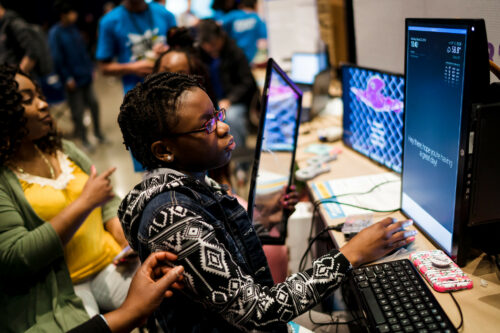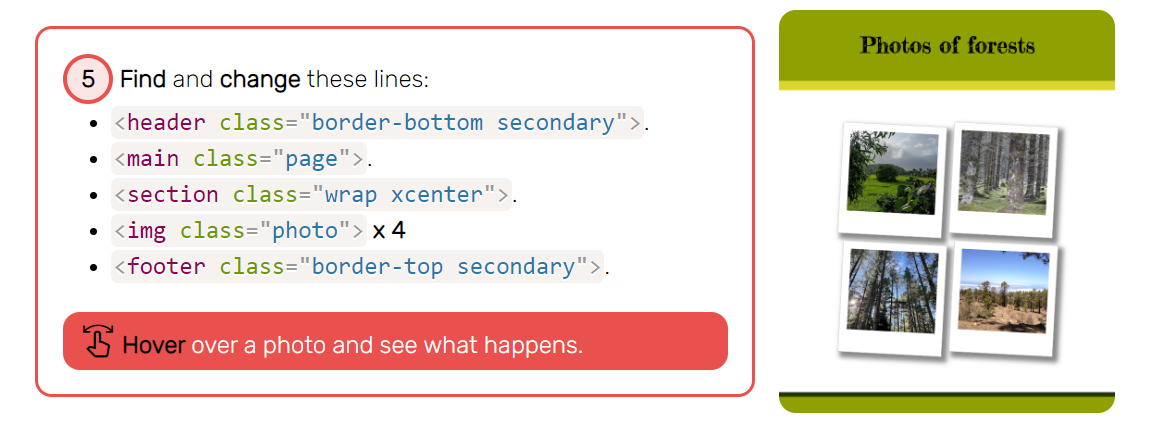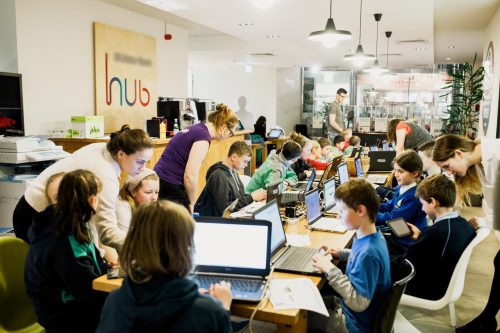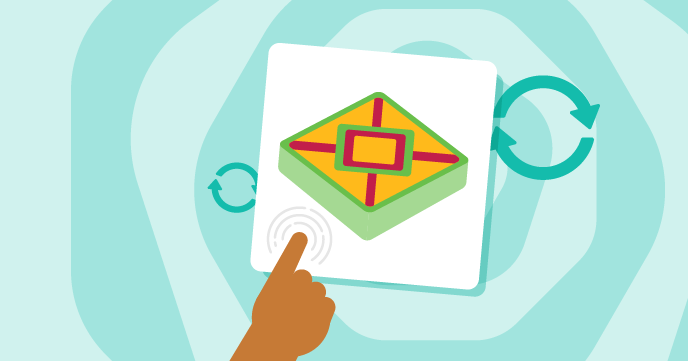Post Syndicated from original https://0pointer.net/blog/fitting-everything-together.html
TLDR: Hermetic /usr/ is awesome; let’s popularize image-based OSes
with modernized security properties built around immutability,
SecureBoot, TPM2, adaptability, auto-updating, factory reset,
uniformity – built from traditional distribution packages, but
deployed via images.
Over the past years, systemd gained a number of components for
building Linux-based operating systems. While these components
individually have been adopted by many distributions and products for
specific purposes, we did not publicly communicate a broader vision
of how they should all fit together in the long run. In this blog story I
hope to provide that from my personal perspective, i.e. explain how I
personally would build an OS and where I personally think OS
development with Linux should go.
I figure this is going to be a longer blog story, but I hope it
will be equally enlightening. Please understand though that everything
I write about OS design here is my personal opinion, and not one of my
employer.
For the last 12 years or so I have been working on Linux OS
development, mostly around systemd. In all those years I had a lot
of time thinking about the Linux platform, and specifically
traditional Linux distributions and their strengths and weaknesses. I
have seen many attempts to reinvent Linux distributions in one way or
another, to varying success. After all this most would probably
agree that the traditional RPM or dpkg/apt-based distributions still
define the Linux platform more than others (for 25+ years now), even
though some Linux-based OSes (Android, ChromeOS) probably outnumber
the installations overall.
And over all those 12 years I kept wondering, how would I actually
build an OS for a system or for an appliance, and what are the
components necessary to achieve that. And most importantly, how can we
make these components generic enough so that they are useful in
generic/traditional distributions too, and in other use cases than my
own.
The Project
Before figuring out how I would build an OS it’s probably good to
figure out what type of OS I actually want to build, what purpose I
intend to cover. I think a desktop OS is probably the most
interesting. Why is that? Well, first of all, I use one of these for my
job every single day, so I care immediately, it’s my primary tool of
work. But more importantly: I think building a desktop OS is one of
the most complex overall OS projects you can work on, simply because
desktops are so much more versatile and variable than servers or
embedded devices. If one figures out the desktop case, I think there’s
a lot more to learn from, and reuse in the server or embedded case,
then going the other way. After all, there’s a reason why so much of the
widely accepted Linux userspace stack comes from people with a desktop
background (including systemd, BTW).
So, let’s see how I would build a desktop OS. If you press me hard,
and ask me why I would do that given that ChromeOS already exists and
more or less is a Linux desktop OS: there’s plenty I am missing in
ChromeOS, but most importantly, I am lot more interested in building
something people can easily and naturally rebuild and hack on,
i.e. Google-style over-the-wall open source with its skewed power
dynamic is not particularly attractive to me. I much prefer building
this within the framework of a proper open source community, out in
the open, and basing all this strongly on the status quo ante,
i.e. the existing distributions. I think it is crucial to provide a
clear avenue to build a modern OS based on the existing distribution
model, if there shall ever be a chance to make this interesting for a
larger audience.
(Let me underline though: even though I am going to focus on a desktop
here, most of this is directly relevant for servers as well, in
particular container host OSes and suchlike, or embedded devices,
e.g. car IVI systems and so on.)
Design Goals
-
First and foremost, I think the focus must be on an image-based
design rather than a package-based one. For robustness and security
it is essential to operate with reproducible, immutable images that
describe the OS or large parts of it in full, rather than operating
always with fine-grained RPM/dpkg style packages. That’s not to say
that packages are not relevant (I actually think they matter a
lot!), but I think they should be less of a tool for deploying code
but more one of building the objects to deploy. A different way to
see this: any OS built like this must be easy to replicate in a
large number of instances, with minimal variability. Regardless if
we talk about desktops, servers or embedded devices: focus for my
OS should be on “cattle”, not “pets”, i.e that from the start it’s
trivial to reuse the well-tested, cryptographically signed
combination of software over a large set of devices the same way,
with a maximum of bit-exact reuse and a minimum of local variances.
-
The trust chain matters, from the boot loader all the way to the
apps. This means all code that is run must be cryptographically
validated before it is run. All storage must be cryptographically
protected: public data must be integrity checked; private data must
remain confidential.
This is in fact where big distributions currently fail pretty
badly. I would go as far as saying that SecureBoot on Linux
distributions is mostly security theater at this point, if you so
will. That’s because the initrd that unlocks your FDE (i.e. the
cryptographic concept that protects the rest of your system) is not
signed or protected in any way. It’s trivial to modify for an
attacker with access to your hard disk in an undetectable way, and
collect your FDE passphrase. The involved bureaucracy around the
implementation of UEFI SecureBoot of the big distributions is to a
large degree pointless if you ask me, given that once the kernel is
assumed to be in a good state, as the next step the system invokes
completely unsafe code with full privileges.
This is a fault of current Linux distributions though, not of
SecureBoot in general. Other OSes use this functionality in more
useful ways, and we should correct that too.
-
Pretty much the same thing: offline security matters. I want
my data to be reasonably safe at rest, i.e. cryptographically
inaccessible even when I leave my laptop in my hotel room,
suspended.
-
Everything should be cryptographically measured, so that remote
attestation is supported for as much software shipped on the OS as
possible.
-
Everything should be self descriptive, have single sources of truths
that are closely attached to the object itself, instead of stored
externally.
-
Everything should be self-updating. Today we know that software is
never bug-free, and thus requires a continuous update cycle. Not
only the OS itself, but also any extensions, services and apps
running on it.
-
Everything should be robust in respect to aborted OS operations,
power loss and so on. It should be robust towards hosed OS updates
(regardless if the download process failed, or the image was
buggy), and not require user interaction to recover from them.
-
There must always be a way to put the system back into a
well-defined, guaranteed safe state (“factory reset”). This
includes that all sensitive data from earlier uses becomes
cryptographically inaccessible.
-
The OS should enforce clear separation between vendor resources,
system resources and user resources: conceptually and when it comes
to cryptographical protection.
-
Things should be adaptive: the system should come up and make the
best of the system it runs on, adapt to the storage and
hardware. Moreover, the system should support execution on bare
metal equally well as execution in a VM environment and in a
container environment (i.e. systemd-nspawn).
-
Things should not require explicit installation. i.e. every image
should be a live image. For installation it should be sufficient to
dd an OS image onto disk. Thus, strong focus on “instantiate on
first boot”, rather than “instantiate before first boot”.
-
Things should be reasonably minimal. The image the system starts
its life with should be quick to download, and not include
resources that can as well be created locally later.
-
System identity, local cryptographic keys and so on should be
generated locally, not be pre-provisioned, so that there’s no leak
of sensitive data during the transport onto the system possible.
-
Things should be reasonably democratic and hackable. It should be
easy to fork an OS, to modify an OS and still get reasonable
cryptographic protection. Modifying your OS should not necessarily
imply that your “warranty is voided” and you lose all good
properties of the OS, if you so will.
-
Things should be reasonably modular. The privileged part of the
core OS must be extensible, including on the individual system.
It’s not sufficient to support extensibility just through
high-level UI applications.
-
Things should be reasonably uniform, i.e. ideally the same formats
and cryptographic properties are used for all components of the
system, regardless if for the host OS itself or the payloads it
receives and runs.
-
Even taking all these goals into consideration, it should still be
close to traditional Linux distributions, and take advantage of what
they are really good at: integration and security update cycles.
Now that we know our goals and requirements, let’s start designing the
OS along these lines.
Hermetic /usr/
First of all the OS resources (code, data files, …) should be
hermetic in an immutable /usr/. This means that a /usr/ tree
should carry everything needed to set up the minimal set of
directories and files outside of /usr/ to make the system work. This
/usr/ tree can then be mounted read-only into the writable root file
system that then will eventually carry the local configuration, state
and user data in /etc/, /var/ and /home/ as usual.
Thankfully, modern distributions are surprisingly close to working
without issues in such a hermetic context. Specifically, Fedora works
mostly just fine: it has adopted the /usr/ merge and the declarative
systemd-sysusers
and
systemd-tmpfiles
components quite comprehensively, which means the directory trees
outside of /usr/ are automatically generated as needed if missing.
In particular /etc/passwd and /etc/group (and related files) are
appropriately populated, should they be missing entries.
In my model a hermetic OS is hence comprehensively defined within
/usr/: combine the /usr/ tree with an empty, otherwise unpopulated
root file system, and it will boot up successfully, automatically
adding the strictly necessary files, and resources that are necessary
to boot up.
Monopolizing vendor OS resources and definitions in an immutable
/usr/ opens multiple doors to us:
-
We can apply dm-verity to the whole /usr/ tree, i.e. guarantee
structural, cryptographic integrity on the whole vendor OS resources
at once, with full file system metadata.
-
We can implement updates to the OS easily: by implementing an A/B
update scheme on the /usr/ tree we can update the OS resources
atomically and robustly, while leaving the rest of the OS environment
untouched.
-
We can implement factory reset easily: erase the root file system
and reboot. The hermetic OS in /usr/ has all the information it
needs to set up the root file system afresh — exactly like in a new
installation.
Initial Look at the Partition Table
So let’s have a look at a suitable partition table, taking a hermetic
/usr/ into account. Let’s conceptually start with a table of four
entries:
-
An UEFI System Partition (required by firmware to boot)
-
Immutable, Verity-protected, signed file system with the /usr/ tree in version A
-
Immutable, Verity-protected, signed file system with the /usr/ tree in version B
-
A writable, encrypted root file system
(This is just for initial illustration here, as we’ll see later it’s
going to be a bit more complex in the end.)
The Discoverable Partitions
Specification provides
suitable partition types UUIDs for all of the above partitions. Which
is great, because it makes the image self-descriptive: simply by
looking at the image’s GPT table we know what to mount where. This
means we do not need a manual /etc/fstab, and a multitude of tools
such as systemd-nspawn and similar can operate directly on the disk
image and boot it up.
Booting
Now that we have a rough idea how to organize the partition table,
let’s look a bit at how to boot into that. Specifically, in my model
“unified kernels” are the way to go, specifically those implementing
Boot Loader Specification Type #2. These are basically
kernel images that have an initial RAM disk attached to them, as well as
a kernel command line, a boot splash image and possibly more, all
wrapped into a single UEFI PE binary. By combining these into one we
achieve two goals: they become extremely easy to update (i.e. drop in
one file, and you update kernel+initrd) and more importantly, you can
sign them as one for the purpose of UEFI SecureBoot.
In my model, each version of such a kernel would be associated with
exactly one version of the /usr/ tree: both are always updated at
the same time. An update then becomes relatively simple: drop in one
new /usr/ file system plus one kernel, and the update is complete.
The boot loader used for all this would be
systemd-boot,
of course. It’s a very simple loader, and implements the
aforementioned boot loader specification. This means it requires no
explicit configuration or anything: it’s entirely sufficient to drop
in one such unified kernel file, and it will be picked up, and be made
a candidate to boot into.
You might wonder how to configure the root file system to boot from
with such a unified kernel that contains the kernel command line and
is signed as a whole and thus immutable. The idea here is to use the
usrhash= kernel command line option implemented by
systemd-veritysetup-generator
and
systemd-fstab-generator. It
does two things: it will search and set up a dm-verity volume for
the /usr/ file system, and then mount it. It takes the root hash
value of the dm-verity Merkle tree as the parameter. This hash is
then also used to find the /usr/ partition in the GPT partition
table, under the assumption that the partition UUIDs are derived from
it, as per the suggestions in the discoverable partitions
specification (see above).
systemd-boot (if not told otherwise) will do a version sort of the
kernel image files it finds, and then automatically boot the newest
one. Picking a specific kernel to boot will also fixate which version
of the /usr/ tree to boot into, because — as mentioned — the Verity
root hash of it is built into the kernel command line the unified
kernel image contains.
In my model I’d place the kernels directly into the UEFI System
Partition (ESP), in order to simplify things. (systemd-boot also
supports reading them from a separate boot partition, but let’s not
complicate things needlessly, at least for now.)
So, with all this, we now already have a boot chain that goes
something like this: once the boot loader is run, it will pick the
newest kernel, which includes the initial RAM disk and a secure
reference to the /usr/ file system to use. This is already
great. But a /usr/ alone won’t make us happy, we also need a root
file system. In my model, that file system would be writable, and the
/etc/ and /var/ hierarchies would be located directly on it. Since
these trees potentially contain secrets (SSH keys, …) the root file
system needs to be encrypted. We’ll use LUKS2 for this, of course. In
my model, I’d bind this to the TPM2 chip (for compatibility with
systems lacking one, we can find a suitable fallback, which then
provides weaker guarantees, see below). A TPM2 is a security chip
available in most modern PCs. Among other things it contains a
persistent secret key that can be used to encrypt data, in a way that
only if you possess access to it and can prove you are using validated
software you can decrypt it again. The cryptographic measuring I
mentioned earlier is what allows this to work. But … let’s not get
lost too much in the details of TPM2 devices, that’d be material for a
novel, and this blog story is going to be way too long already.
What does using a TPM2 bound key for unlocking the root file system
get us? We can encrypt the root file system with it, and you can only
read or make changes to the root file system if you also possess the
TPM2 chip and run our validated version of the OS. This protects us
against an evil maid scenario to some level: an attacker cannot
just copy the hard disk of your laptop while you leave it in your
hotel room, because unless the attacker also steals the TPM2 device it
cannot be decrypted. The attacker can also not just modify the root
file system, because such changes would be detected on next boot
because they aren’t done with the right cryptographic key.
So, now we have a system that already can boot up somewhat completely,
and run userspace services. All code that is run is verified in some
way: the /usr/ file system is Verity protected, and the root hash of
it is included in the kernel that is signed via UEFI SecureBoot. And
the root file system is locked to the TPM2 where the secret key is
only accessible if our signed OS + /usr/ tree is used.
(One brief intermission here: so far all the components I am
referencing here exist already, and have been shipped in systemd and
other projects already, including the TPM2 based disk
encryption. There’s one thing missing here however at the moment that
still needs to be developed (happy to take PRs!): right now TPM2 based
LUKS2 unlocking is bound to PCR hash values. This is hard to work with
when implementing updates — what we’d need instead is unlocking by
signatures of PCR hashes. TPM2 supports this, but we don’t support it
yet in our systemd-cryptsetup + systemd-cryptenroll stack.)
One of the goals mentioned above is that cryptographic key material
should always be generated locally on first boot, rather than
pre-provisioned. This of course has implications for the encryption
key of the root file system: if we want to boot into this system we
need the root file system to exist, and thus a key already generated
that it is encrypted with. But where precisely would we generate it if
we have no installer which could generate while installing (as it is
done in traditional Linux distribution installers). My proposed
solution here is to use
systemd-repart,
which is a declarative, purely additive repartitioner. It can run from
the initrd to create and format partitions on boot, before
transitioning into the root file system. It can also format the
partitions it creates and encrypt them, automatically enrolling an
TPM2-bound key.
So, let’s revisit the partition table we mentioned earlier. Here’s
what in my model we’d actually ship in the initial image:
-
An UEFI System Partition (ESP)
-
An immutable, Verity-protected, signed file system with the /usr/ tree in version A
And that’s already it. No root file system, no B /usr/ partition,
nothing else. Only two partitions are shipped: the ESP with the
systemd-boot loader and one unified kernel image, and the A version
of the /usr/ partition. Then, on first boot systemd-repart will
notice that the root file system doesn’t exist yet, and will create
it, encrypt it, and format it, and enroll the key into the TPM2. It
will also create the second /usr/ partition (B) that we’ll need for
later A/B updates (which will be created empty for now, until the
first update operation actually takes place, see below). Once done the
initrd will combine the fresh root file system with the shipped
/usr/ tree, and transition into it. Because the OS is hermetic in
/usr/ and contains all the systemd-tmpfiles and systemd-sysuser
information it can then set up the root file system properly and
create any directories and symlinks (and maybe a few files) necessary
to operate.
Besides the fact that the root file system’s encryption keys are
generated on the system we boot from and never leave it, it is also
pretty nice that the root file system will be sized dynamically,
taking into account the physical size of the backing storage. This is
perfect, because on first boot the image will automatically adapt to what
it has been dd‘ed onto.
Factory Reset
This is a good point to talk about the factory reset logic, i.e. the
mechanism to place the system back into a known good state. This is
important for two reasons: in our laptop use case, once you want to
pass the laptop to someone else, you want to ensure your data is fully
and comprehensively erased. Moreover, if you have reason to believe
your device was hacked you want to revert the device to a known good
state, i.e. ensure that exploits cannot persist. systemd-repart
already has a mechanism for it. In the declarations of the partitions
the system should have, entries may be marked to be candidates for
erasing on factory reset. The actual factory reset is then requested
by one of two means: by specifying a specific kernel command line
option (which is not too interesting here, given we lock that down via
UEFI SecureBoot; but then again, one could also add a second kernel to
the ESP that is identical to the first, with only different that it
lists this command line option: thus when the user selects this entry
it will initiate a factory reset) — and via an EFI variable that can
be set and is honoured on the immediately following boot. So here’s
how a factory reset would then go down: once the factory reset is
requested it’s enough to reboot. On the subsequent boot
systemd-repart runs from the initrd, where it will honour the
request and erase the partitions marked for erasing. Once that is
complete the system is back in the state we shipped the system in:
only the ESP and the /usr/ file system will exist, but the root file
system is gone. And from here we can continue as on the original first
boot: create a new root file system (and any other partitions), and
encrypt/set it up afresh.
So now we have a nice setup, where everything is either signed or
encrypted securely. The system can adapt to the system it is booted on
automatically on first boot, and can easily be brought back into a
well defined state identical to the way it was shipped in.
Modularity
But of course, such a monolithic, immutable system is only useful for
very specific purposes. If /usr/ can’t be written to, – at least in
the traditional sense – one cannot just go and install a new software
package that one needs. So here two goals are superficially
conflicting: on one hand one wants modularity, i.e. the ability to
add components to the system, and on the other immutability, i.e. that
precisely this is prohibited.
So let’s see what I propose as a middle ground in my model. First,
what’s the precise use case for such modularity? I see a couple of
different ones:
-
For some cases it is necessary to extend the system itself at the
lowest level, so that the components added in extend (or maybe even
replace) the resources shipped in the base OS image, so that they live
in the same namespace, and are subject to the same security
restrictions and privileges. Exposure to the details of the base OS
and its interface for this kind of modularity is at the maximum.
Example: a module that adds a debugger or tracing tools into the
system. Or maybe an optional hardware driver module.
-
In other cases, more isolation is preferable: instead of extending
the system resources directly, additional services shall be added
in that bring their own files, can live in their own namespace
(but with “windows” into the host namespaces), however still are
system components, and provide services to other programs, whether
local or remote. Exposure to the details of the base OS for this
kind of modularity is restricted: it mostly focuses on the
ability to consume and provide IPC APIs from/to the
system. Components of this type can still be highly privileged, but
the level of integration is substantially smaller than for the type
explained above.
Example: a module that adds a specific VPN connection service to
the OS.
-
Finally, there’s the actual payload of the OS. This stuff is
relatively isolated from the OS and definitely from each other. It
mostly consumes OS APIs, and generally doesn’t provide OS
APIs. This kind of stuff runs with minimal privileges, and in its
own namespace of concepts.
Example: a desktop app, for reading your emails.
Of course, the lines between these three types of modules are blurry,
but I think distinguishing them does make sense, as I think different
mechanisms are appropriate for each. So here’s what I’d propose in my
model to use for this.
-
For the system extension case I think the
systemd-sysext
images are appropriate. This tool operates on
system extension images that are very similar to the host’s disk
image: they also contain a /usr/ partition, protected by
Verity. However, they just include additions to the host image:
binaries that extend the host. When such a system extension image
is activated, it is merged via an immutable overlayfs mount into
the host’s /usr/ tree. Thus any file shipped in such a system
extension will suddenly appear as if it was part of the host OS
itself. For optional components that should be considered part of
the OS more or less this is a very simple and powerful way to
combine an immutable OS with an immutable extension. Note that most
likely extensions for an OS matching this tool should be built at
the same time within the same update cycle scheme as the host OS
itself. After all, the files included in the extensions will have
dependencies on files in the system OS image, and care must be
taken that these dependencies remain in order.
-
For adding in additional somewhat isolated system services in my
model, Portable Services
are the proposed tool of choice. Portable services are in most ways
just like regular system services; they could be included in the
system OS image or an extension image. However, portable services
use
RootImage=
to run off separate disk images, thus within their own
namespace. Images set up this way have various ways to integrate
into the host OS, as they are in most ways regular system services,
which just happen to bring their own directory tree. Also, unlike
regular system services, for them sandboxing is opt-out rather than
opt-in. In my model, here too the disk images are Verity protected
and thus immutable. Just like the host OS they are GPT disk images
that come with a /usr/ partition and Verity data, along with
signing.
-
Finally, the actual payload of the OS, i.e. the apps. To be useful
in real life here it is important to hook into existing ecosystems,
so that a large set of apps are available. Given that on Linux
flatpak (or on servers OCI containers) are the established format
that pretty much won they are probably the way to go. That said, I
think both of these mechanisms have relatively weak properties, in
particular when it comes to security, since
immutability/measurements and similar are not provided. This means,
unlike for system extensions and portable services a complete trust
chain with attestation and per-app cryptographically protected data
is much harder to implement sanely.
What I’d like to underline here is that the main system OS image, as
well as the system extension images and the portable service images
are put together the same way: they are GPT disk images, with one
immutable file system and associated Verity data. The latter two
should also contain a PKCS#7 signature for the top-level Verity
hash. This uniformity has many benefits: you can use the same tools to
build and process these images, but most importantly: by using a
single way to validate them throughout the stack (i.e. Verity, in the
latter cases with PKCS#7 signatures), validation and measurement is
straightforward. In fact it’s so obvious that we don’t even have to
implement it in systemd: the kernel has direct support for this Verity
signature checking natively already (IMA).
So, by composing a system at runtime from a host image, extension
images and portable service images we have a nicely modular system
where every single component is cryptographically validated on every
single IO operation, and every component is measured, in its entire
combination, directly in the kernel’s IMA subsystem.
(Of course, once you add the desktop apps or OCI containers on top,
then these properties are lost further down the chain. But well, a lot
is already won, if you can close the chain that far down.)
Note that system extensions are not designed to replicate the fine
grained packaging logic of RPM/dpkg. Of course, systemd-sysext is a
generic tool, so you can use it for whatever you want, but there’s a
reason it does not bring support for a dependency language: the goal
here is not to replicate traditional Linux packaging (we have that
already, in RPM/dpkg, and I think they are actually OK for what they
do) but to provide delivery of larger, coarser sets of functionality,
in lockstep with the underlying OS’ life-cycle and in particular with
no interdependencies, except on the underlying OS.
Also note that depending on the use case it might make sense to also
use system extensions to modularize the initrd step. This is
probably less relevant for a desktop OS, but for server systems it
might make sense to package up support for specific complex storage in
a systemd-sysext system extension, which can be applied to the
initrd that is built into the unified kernel. (In fact, we have been
working on implementing signed yet modular initrd support to general
purpose Fedora this way.)
Note that portable services are composable from system extension too,
by the way. This makes them even more useful, as you can share a
common runtime between multiple portable service, or even use the host
image as common runtime for portable services. In this model a common
runtime image is shared between one or more system extensions, and
composed at runtime via an overlayfs instance.
More Modularity: Secondary OS Installs
Having an immutable, cryptographically locked down host OS is great I
think, and if we have some moderate modularity on top, that’s also
great. But oftentimes it’s useful to be able to depart/compromise for
some specific use cases from that, i.e. provide a bridge for example to
allow workloads designed around RPM/dpkg package management to coexist
reasonably nicely with such an immutable host.
For this purpose in my model I’d propose using systemd-nspawn
containers. The containers are focused on OS containerization,
i.e. they allow you to run a full OS with init system and everything
as payload (unlike for example Docker containers which focus on a
single service, and where running a full OS in it is a mess).
Running systemd-nspawn containers for such secondary OS installs has
various nice properties. One of course is that systemd-nspawn
supports the same level of cryptographic image validation that we rely
on for the host itself. Thus, to some level the whole OS trust chain
is reasonably recursive if desired: the firmware validates the OS, and the OS can
validate a secondary OS installed within it. In fact, we can run our
trusted OS recursively on itself and get similar security guarantees!
Besides these security aspects, systemd-nspawn also has really nice
properties when it comes to integration with the host. For example the
--bind-user= permits binding a host user record and their directory
into a container as a simple one step operation. This makes it
extremely easy to have a single user and $HOME but share it
concurrently with the host and a zoo of secondary OSes in
systemd-nspawn containers, which each could run different
distributions even.
Developer Mode
Superficially, an OS with an immutable /usr/ appears much less
hackable than an OS where everything is writable. Moreover, an OS
where everything must be signed and cryptographically validated makes
it hard to insert your own code, given you are unlikely to possess
access to the signing keys.
To address this issue other systems have supported a “developer” mode:
when entered the security guarantees are disabled, and the system can
be freely modified, without cryptographic validation. While that’s a
great concept to have I doubt it’s what most developers really want:
the cryptographic properties of the OS are great after all, it sucks
having to give them up once developer mode is activated.
In my model I’d thus propose two different approaches to this
problem. First of all, I think there’s value in allowing users to
additively extend/override the OS via local developer system
extensions. With
this scheme the underlying cryptographic validation would remain in
tact, but — if this form of development mode is explicitly enabled –
the developer could add in more resources from local storage, that are
not tied to the OS builder’s chain of trust, but a local one
(i.e. simply backed by encrypted storage of some form).
The second approach is to make it easy to extend (or in fact replace)
the set of trusted validation keys, with local ones that are under the
control of the user, in order to make it easy to operate with kernel,
OS, extension, portable service or container images signed by the
local developer without involvement of the OS builder. This is
relatively easy to do for components down the trust chain, i.e. the
elements further up the chain should optionally allow additional
certificates to allow validation with.
(Note that systemd currently has no explicit support for a
“developer” mode like this. I think we should add that sooner or later
however.)
Democratizing Code Signing
Closely related to the question of developer mode is the question of
code signing. If you ask me, the status quo of UEFI SecureBoot code
signing in the major Linux distributions is pretty sad. The work to
get stuff signed is massive, but in effect it delivers very little in
return: because initrds are entirely unprotected, and reside on
partitions lacking any form of cryptographic integrity protection any
attacker can trivially easily modify the boot process of any such
Linux system and freely collected FDE passphrases entered. There’s
little value in signing the boot loader and kernel in a complex
bureaucracy if it then happily loads entirely unprotected code that
processes the actually relevant security credentials: the FDE
keys.
In my model, through use of unified kernels this important gap is
closed, hence UEFI SecureBoot code signing becomes an integral part of
the boot chain from firmware to the host OS. Unfortunately, code
signing – and having something a user can locally hack, is to some
level conflicting. However, I think we can improve the situation here,
and put more emphasis on enrolling developer keys in the trust chain
easily. Specifically, I see one relevant approach here: enrolling keys
directly in the firmware is something that we should make less of a
theoretical exercise and more something we can realistically
deploy. See this work in
progress
making this more automatic and eventually safe. Other approaches are
thinkable (including some that build on existing MokManager
infrastructure), but given the politics involved, are harder to
conclusively implement.
Running the OS itself in a container
What I explain above is put together with running on a bare metal
system in mind. However, one of the stated goals is to make the OS
adaptive enough to also run in a container environment (specifically:
systemd-nspawn) nicely. Booting a disk image on bare metal or in a
VM generally means that the UEFI firmware validates and invokes the
boot loader, and the boot loader invokes the kernel which then
transitions into the final system. This is different for containers:
here the container manager immediately calls the init system, i.e. PID
1. Thus the validation logic must be different: cryptographic
validation must be done by the container manager. In my model this is
solved by shipping the OS image not only with a Verity data partition
(as is already necessary for the UEFI SecureBoot trust chain, see
above), but also with another partition, containing a PKCS#7 signature
of the root hash of said Verity partition. This of course is exactly
what I propose for both the system extension and portable service
image. Thus, in my model the images for all three uses are put
together the same way: an immutable /usr/ partition, accompanied by
a Verity partition and a PKCS#7 signature partition. The OS image
itself then has two ways “into” the trust chain: either through the
signed unified kernel in the ESP (which is used for bare metal and VM
boots) or by using the PKCS#7 signature stored in the partition
(which is used for container/systemd-nspawn boots).
Parameterizing Kernels
A fully immutable and signed OS has to establish trust in the user
data it makes use of before doing so. In the model I describe here,
for /etc/ and /var/ we do this via disk encryption of the root
file system (in combination with integrity checking). But the point
where the root file system is mounted comes relatively late in the
boot process, and thus cannot be used to parameterize the boot
itself. In many cases it’s important to be able to parameterize the
boot process however.
For example, for the implementation of the developer mode indicated
above it’s useful to be able to pass this fact safely to the initrd,
in combination with other fields (e.g. hashed root password for
allowing in-initrd logins for debug purposes). After all, if the
initrd is pre-built by the vendor and signed as whole together with
the kernel it cannot be modified to carry such data directly (which is
in fact how parameterizing of the initrd to a large degree was traditionally
done).
In my model this is achieved through system
credentials, which allow passing
parameters to systems (and services for the matter) in an encrypted
and authenticated fashion, bound to the TPM2 chip. This means that we
can securely pass data into the initrd so that it can be authenticated
and decrypted only on the system it is intended for and with the
unified kernel image it was intended for.
Swap
In my model the OS would also carry a swap partition. For the simple
reason that only then
systemd-oomd.service
can provide the best results. Also see In defence of swap: common
misconceptions
Updating Images
We have a rough idea how the system shall be organized now, let’s next
focus on the deployment cycle: software needs regular update cycles,
and software that is not updated regularly is a security
problem. Thus, I am sure that any modern system must be automatically
updated, without this requiring avoidable user interaction.
In my model, this is the job for
systemd-sysupdate. It’s
a relatively simple A/B image updater: it operates either on
partitions, on regular files in a directory, or on subdirectories in a
directory. Each entry has a version (which is encoded in the GPT
partition label for partitions, and in the filename for regular files
and directories): whenever an update is initiated the oldest version
is erased, and the newest version is downloaded.
With the setup described above a system update becomes a really simple
operation. On each update the systemd-sysupdate tool downloads a
/usr/ file system partition, an accompanying Verity partition, a
PKCS#7 signature partition, and drops it into the host’s partition
table (where it possibly replaces the oldest version so far stored
there). Then it downloads a unified kernel image and drops it into
the EFI System Partition’s /EFI/Linux (as per Boot Loader
Specification; possibly erase the oldest such file there). And that’s
already the whole update process: four files are downloaded from the
server, unpacked and put in the most straightforward of ways into the
partition table or file system. Unlike in other OS designs there’s no
mechanism required to explicitly switch to the newer version, the
aforementioned systemd-boot logic will automatically pick the newest
kernel once it is dropped in.
Above we talked a lot about modularity, and how to put systems
together as a combination of a host OS image, system extension images
for the initrd and the host, portable service images and
systemd-nspawn container images. I already emphasized that these
image files are actually always the same: GPT disk images with
partition definitions that match the Discoverable Partition
Specification. This comes very handy when thinking about updating: we
can use the exact same systemd-sysupdate tool for updating these
other images as we use for the host image. The uniformity of the
on-disk format allows us to update them uniformly too.
Boot Counting + Assessment
Automatic OS updates do not come without risks: if they happen
automatically, and an update goes wrong this might mean your system
might be automatically updated into a brick. This of course is less
than ideal. Hence it is essential to address this reasonably
automatically. In my model, there’s systemd’s Automatic Boot
Assessment for
that. The mechanism is simple: whenever a new unified kernel image is
dropped into the system it will be stored with a small integer counter
value included in the filename. Whenever the unified kernel image is
selected for booting by systemd-boot, it is decreased by one. Once
the system booted up successfully (which is determined by userspace)
the counter is removed from the file name (which indicates “this entry
is known to work”). If the counter ever hits zero, this indicates that
it tried to boot it a couple of times, and each time failed, thus is
apparently “bad”. In this case systemd-boot will not consider the
kernel anymore, and revert to the next older (that doesn’t have a
counter of zero).
By sticking the boot counter into the filename of the unified kernel
we can directly attach this information to the kernel, and thus need
not concern ourselves with cleaning up secondary information about the
kernel when the kernel is removed. Updating with a tool like
systemd-sysupdate remains a very simple operation hence: drop one
old file, add one new file.
Picking the Newest Version
I already mentioned that systemd-boot automatically picks the newest
unified kernel image to boot, by looking at the version encoded in the
filename. This is done via a simple
strverscmp()
call (well, truth be told, it’s a modified version of that call,
different from the one implemented in libc, because real-life package
managers use more complex rules for comparing versions these days, and
hence it made sense to do that here too). The concept of having
multiple entries of some resource in a directory, and picking the
newest one automatically is a powerful concept, I think. It means
adding/removing new versions is extremely easy (as we discussed above,
in systemd-sysupdate context), and allows stateless determination of
what to use.
If systemd-boot can do that, what about system extension images,
portable service images, or systemd-nspawn container images that do
not actually use systemd-boot as the entrypoint? All these tools
actually implement the very same logic, but on the partition level: if
multiple suitable /usr/ partitions exist, then the newest is determined
by comparing the GPT partition label of them.
This is in a way the counterpart to the systemd-sysupdate update
logic described above: we always need a way to determine which
partition to actually then use after the update took place: and this
becomes very easy each time: enumerate possible entries, pick the
newest as per the (modified) strverscmp() result.
Home Directory Management
In my model the device’s users and their home directories are managed
by
systemd-homed. This
means they are relatively self-contained and can be migrated easily
between devices. The numeric UID assignment for each user is done at
the moment of login only, and the files in the home directory are
mapped as needed via a uidmap mount. It also allows us to protect
the data of each user individually with a credential that belongs to
the user itself. i.e. instead of binding confidentiality of the user’s
data to the system-wide full-disk-encryption each user gets their own
encrypted home directory where the user’s authentication token
(password, FIDO2 token, PKCS#11 token, recovery key…) is used as
authentication and decryption key for the user’s data. This brings
a major improvement for security as it means the user’s data is
cryptographically inaccessible except when the user is actually logged
in.
It also allows us to correct another major issue with traditional
Linux systems: the way how data encryption works during system
suspend. Traditionally on Linux the disk encryption credentials
(e.g. LUKS passphrase) is kept in memory also when the system is
suspended. This is a bad choice for security, since many (most?) of us
probably never turn off their laptop but suspend it instead. But if
the decryption key is always present in unencrypted form during the
suspended time, then it could potentially be read from there by a
sufficiently equipped attacker.
By encrypting the user’s home directory with the user’s authentication
token we can first safely “suspend” the home directory before going to
the system suspend state (i.e. flush out the cryptographic keys needed
to access it). This means any process currently accessing the home
directory will be frozen for the time of the suspend, but that’s
expected anyway during a system suspend cycle. Why is this better than
the status quo ante? In this model the home directory’s cryptographic
key material is erased during suspend, but it can be safely reacquired
on resume, from system code. If the system is only encrypted as a
whole however, then the system code itself couldn’t reauthenticate the
user, because it would be frozen too. By separating home directory
encryption from the root file system encryption we can avoid this
problem.
Partition Setup
So we discussed the organization of the partitions OS images multiple
times in the above, each time focusing on a specific aspect. Let’s
now summarize how this should look like all together.
In my model, the initial, shipped OS image should look roughly like this:
- (1) An UEFI System Partition, with
systemd-boot as boot loader and one unified kernel
- (2) A
/usr/ partition (version “A”), with a label fooOS_0.7 (under the assumption we called our project fooOS and the image version is 0.7).
- (3) A Verity partition for the
/usr/ partition (version “A”), with the same label
- (4) A partition carrying the Verity root hash for the
/usr/ partition (version “A”), along with a PKCS#7 signature of it, also with the same label
On first boot this is augmented by systemd-repart like this:
- (5) A second
/usr/ partition (version “B”), initially with a label _empty (which is the label systemd-sysupdate uses to mark partitions that currently carry no valid payload)
- (6) A Verity partition for that (version “B”), similar to the above case, also labelled
_empty
- (7) And ditto a Verity root hash partition with a PKCS#7 signature (version “B”), also labelled
_empty
- (8) A root file system, encrypted and locked to the TPM2
- (9) A home file system, integrity protected via a key also in TPM2 (encryption is unnecessary, since
systemd-homed adds that on its own, and it’s nice to avoid duplicate encryption)
- (10) A swap partition, encrypted and locked to the TPM2
Then, on the first OS update the partitions 5, 6, 7 are filled with a
new version of the OS (let’s say 0.8) and thus get their label
updated to fooOS_0.8. After a boot, this version is active.
On a subsequent update the three partitions fooOS_0.7 get wiped and
replaced by fooOS_0.9 and so on.
On factory reset, the partitions 8, 9, 10 are deleted, so that
systemd-repart recreates them, using a new set of cryptographic
keys.
Here’s a graphic that hopefully illustrates the partition stable from
shipped image, through first boot, multiple update cycles and eventual
factory reset:

Trust Chain
So let’s summarize the intended chain of trust (for bare metal/VM
boots) that ensures every piece of code in this model is signed
and validated, and any system secret is locked to TPM2.
-
First, firmware (or possibly shim) authenticates systemd-boot.
-
Once systemd-boot picks a unified kernel image to boot, it is
also authenticated by firmware/shim.
-
The unified kernel image contains an initrd, which is the first
userspace component that runs. It finds any system extensions passed
into the initrd, and sets them up through Verity. The kernel will
validate the Verity root hash signature of these system extension
images against its usual keyring.
-
The initrd also finds credentials passed in, then securely unlocks
(which means: decrypts + authenticates) them with a secret from the
TPM2 chip, locked to the kernel image itself.
-
The kernel image also contains a kernel command line which contains
a usrhash= option that pins the root hash of the /usr/ partition
to use.
-
The initrd then unlocks the encrypted root file system, with a
secret bound to the TPM2 chip.
-
The system then transitions into the main system, i.e. the
combination of the Verity protected /usr/ and the encrypted root
files system. It then activates two more encrypted (and/or
integrity protected) volumes for /home/ and swap, also with a
secret tied to the TPM2 chip.
Here’s an attempt to illustrate the above graphically:

This is the trust chain of the basic OS. Validation of system
extension images, portable service images, systemd-nspawn container
images always takes place the same way: the kernel validates these
Verity images along with their PKCS#7 signatures against the kernel’s
keyring.
File System Choice
In the above I left the choice of file systems unspecified. For the
immutable /usr/ partitions squashfs might be a good candidate, but
any other that works nicely in a read-only fashion and generates
reproducible results is a good choice, too. The home directories as managed
by systemd-homed should certainly use btrfs, because it’s the only
general purpose file system supporting online grow and shrink, which
systemd-homed can take benefit of, to manage storage.
For the root file system btrfs is likely also the best idea. That’s
because we intend to use LUKS/dm-crypt underneath, which by default
only provides confidentiality, not authenticity of the data (unless
combined with dm-integrity). Since btrfs (unlike xfs/ext4) does
full data checksumming it’s probably the best choice here, since it
means we don’t have to use dm-integrity (which comes at a higher
performance cost).
OS Installation vs. OS Instantiation
In the discussion above a lot of focus was put on setting up the OS
and completing the partition layout and such on first boot. This means
installing the OS becomes as simple as dd-ing (i.e. “streaming”) the
shipped disk image into the final HDD medium. Simple, isn’t it?
Of course, such a scheme is just too simple for many setups in real
life. Whenever multi-boot is required (i.e. co-installing an OS
implementing this model with another unrelated one), dd-ing a disk
image onto the HDD is going to overwrite user data that was supposed
to be kept around.
In order to cover for this case, in my model, we’d use
systemd-repart (again!) to allow streaming the source disk image
into the target HDD in a smarter, additive way. The tool after all is
purely additive: it will add in partitions or grow them if they are
missing or too small. systemd-repart already has all the necessary
provisions to not only create a partition on the target disk, but also
copy blocks from a raw installer disk. An install operation would then
become a two stop process: one invocation of systemd-repart that
adds in the /usr/, its Verity and the signature partition to the
target medium, populated with a copy of the same partition of the
installer medium. And one invocation of bootctl that installs the
systemd-boot boot loader in the ESP. (Well, there’s one thing
missing here: the unified OS kernel also needs to be dropped into the
ESP. For now, this can be done with a simple cp call. In the long
run, this should probably be something bootctl can do as well, if
told so.)
So, with this scheme we have a simple scheme to cover all bases: we
can either just dd an image to disk, or we can stream an image onto
an existing HDD, adding a couple of new partitions and files to the
ESP.
Of course, in reality things are more complex than that even: there’s
a good chance that the existing ESP is simply too small to carry
multiple unified kernels. In my model, the way to address this is by
shipping two slightly different systemd-repart partition definition
file sets: the ideal case when the ESP is large enough, and a
fallback case, where it isn’t and where we then add in an addition
XBOOTLDR partition (as per the Discoverable Partitions
Specification). In that mode the ESP carries the boot loader, but the
unified kernels are stored in the XBOOTLDR partition. This scenario is
not quite as simple as the XBOOTLDR-less scenario described first, but
is equally well supported in the various tools. Note that
systemd-repart can be told size constraints on the partitions it
shall create or augment, thus to implement this scheme it’s enough to
invoke the tool with the fallback partition scheme if invocation with
the ideal scheme fails.
Either way: regardless how the partitions, the boot loader and the
unified kernels ended up on the system’s hard disk, on first boot the
code paths are the same again: systemd-repart will be called to
augment the partition table with the root file system, and properly
encrypt it, as was already discussed earlier here. This means: all
cryptographic key material used for disk encryption is generated on
first boot only, the installer phase does not encrypt anything.
Live Systems vs. Installer Systems vs. Installed Systems
Traditionally on Linux three types of systems were common: “installed”
systems, i.e. that are stored on the main storage of the device and
are the primary place people spend their time in; “installer” systems
which are used to install them and whose job is to copy and setup the
packages that make up the installed system; and “live” systems, which
were a middle ground: a system that behaves like an installed system
in most ways, but lives on removable media.
In my model I’d like to remove the distinction between these three
concepts as much as possible: each of these three images should carry
the exact same /usr/ file system, and should be suitable to be
replicated the same way. Once installed the resulting image can also
act as an installer for another system, and so on, creating a certain
“viral” effect: if you have one image or installation it’s
automatically something you can replicate 1:1 with a simple
systemd-repart invocation.
Building Images According to this Model
The above explains how the image should look like and how its first
boot and update cycle will modify it. But this leaves one question
unanswered: how to actually build the initial image for OS instances
according to this model?
Note that there’s nothing too special about the images following this
model: they are ultimately just GPT disk images with Linux file
systems, following the Discoverable Partition Specification. This
means you can use any set of tools of your choice that can put
together GPT disk images for compliant images.
I personally would use mkosi for
this purpose though. It’s designed to generate compliant images, and
has a rich toolset for SecureBoot and signed/Verity file systems
already in place.
What is key here is that this model doesn’t depart from RPM and dpkg,
instead it builds on top of that: in this model they are excellent for
putting together images on the build host, but deployment onto the
runtime host does not involve individual packages.
I think one cannot underestimate the value traditional distributions
bring, regarding security, integration and general polishing. The
concepts I describe above are inherited from this, but depart from the
idea that distribution packages are a runtime concept and make it a
build-time concept instead.
Note that the above is pretty much independent from the underlying
distribution.
Final Words
I have no illusions, general purpose distributions are not going to
adopt this model as their default any time soon, and it’s not even my
goal that they do that. The above is my personal vision, and I
don’t expect people to buy into it 100%, and that’s fine. However,
what I am interested in is finding the overlaps, i.e. work with people
who buy 50% into this vision, and share the components.
My goals here thus are to:
-
Get distributions to move to a model where images like this can be
built from the distribution easily. Specifically this means that
distributions make their OS hermetic in /usr/.
-
Find the overlaps, share components with other projects to revisit
how distributions are put together. This is already happening, see
systemd-tmpfiles and systemd-sysuser support in various
distributions, but I think there’s more to share.
-
Make people interested in building actual real-world images based
on general purpose distributions adhering to the model described
above. I’d love a “GnomeBook” image with full trust properties,
that is built from true Linux distros, such as Fedora or
ArchLinux.
FAQ
-
What about ostree? Doesn’t ostree already deliver what this blog story describes?
ostree is fine technology, but in respect to security and
robustness properties it’s not too interesting I think, because
unlike image-based approaches it cannot really deliver
integrity/robustness guarantees easily. To be able to trust an
ostree setup you have to establish trust into the underlying
file system first, and the complexity of the file system makes
that challenging. To provide an effective offline-secure trust
chain through the whole depth of the stack it is essential to
cryptographically validate every single I/O operation. In an
image-based model this is trivially easy, but in ostree model
it’s with current file system technology not possible and even if
this is added in one way or another in the future (though I am not
aware of anyone doing file-based integrity that was compatible
with ostree‘s hardlink farm model) I think validation is still
at too high a level, since Linux file system developers made very
clear their implementations are not robust to rogue images.
With my design I want to deliver similar security guarantees as
ChromeOS does, but ostree is much weaker there, and I see no
perspective of this changing. In a way ostree‘s integrity checks
are similar to RPM’s and enforced on download rather than on
access. In the model I suggest above, it’s always on access, and
thus safe towards offline attacks (i.e. evil maid attacks). In
today’s world, I think offline security is absolutely necessary
though.
That said, ostree does have some benefits over the model
described above: it naturally shares file system inodes if many of
the modules/images involved share the same data. It’s thus more
space efficient on disk (and thus also in RAM/cache to some
degree) by default. In my model it would be up to the image
builders to minimize shipping overly redundant disk images, by
making good use of suitably composable system extensions.
-
What about configuration management?
At first glance immutable systems and configuration management
don’t go that well together. However, do note, that in the model
I propose above the root file system with all its contents,
including /etc/ and /var/ is actually writable and can be
modified like on any other typical Linux distribution. The only
exception is /usr/ where the immutable OS is hermetic. That
means configuration management tools should work just fine in this
model – up to the point where they are used to install additional
RPM/dpkg packages, because that’s something not allowed in the
model above: packages need to be installed at image build time and
thus on the image build host, not the runtime host.
-
What about non-UEFI and non-TPM2 systems?
The above is designed around the feature set of contemporary PCs,
and this means UEFI and TPM2 being available (simply because the
PC is pretty much defined by the Windows platform, and current
versions of Windows require both).
I think it’s important to make the best of the features of today’s
PC hardware, and then find suitable fallbacks on more limited
hardware. Specifically this means: if there’s desire to implement
something like the this on non-UEFI or non-TPM2 hardware we should
look for suitable fallbacks for the individual functionality, but
generally try to add glue to the old systems so that conceptually
they behave more like the new systems instead of the other way
round. Or in other words: most of the above is not strictly tied
to UEFI or TPM2, and for many cases already there are reasonably
fallbacks in place for more limited systems. Of course, without
TPM2 many of the security guarantees will be weakened.
-
How would you name an OS built that way?
I think a desktop OS built this way if it has the GNOME desktop
should of course be called GnomeBook, to mimic the ChromeBook
name. 😉
But in general, I’d call hermetic, adaptive, immutable OSes like this “particles“.
How can you help?
-
Help making Distributions Hermetic in /usr/!
One of the core ideas of the approach described above is to make
the OS hermetic in /usr/, i.e. make it carry a comprehensive
description of what needs to be set up outside of it when
instantiated. Specifically, this means that system users that are
needed are declared in systemd-sysusers snippets, and skeleton
files and directories are created via systemd-tmpfiles. Moreover
additional partitions should be declared via systemd-repart
drop-ins.
At this point some distributions (such as Fedora) are (probably
more by accident than on purpose) already mostly hermetic in
/usr/, at least for the most basic parts of the OS. However,
this is not complete: many daemons require to have specific
resources set up in /var/ or /etc/ before they can work, and
the relevant packages do not carry systemd-tmpfiles descriptions
that add them if missing. So there are two ways you could help
here: politically, it would be highly relevant to convince
distributions that an OS that is hermetic in /usr/ is highly
desirable and it’s a worthy goal for packagers to get there. More
specifically, it would be desirable if RPM/dpkg packages would
ship with enough systemd-tmpfiles information so that
configuration files the packages strictly need for operation are
symlinked (or copied) from /usr/share/factory/ if they are
missing (even better of course would be if packages from their
upstream sources on would just work with an empty /etc/ and
/var/, and create themselves what they need and default to good
defaults in absence of configuration files).
Note that distributions that adopted systemd-sysusers,
systemd-tmpfiles and the /usr/ merge are already quite close
to providing an OS that is hermetic in /usr/. These were the
big, the major advancements: making the image fully hermetic
should be less controversial – at least that’s my guess.
Also note that making the OS hermetic in /usr/ is not just useful in
scenarios like the above. It also means that stuff like
this
and like
this
can work well.
-
Fill in the gaps!
I already mentioned a couple of missing bits and pieces in the
implementation of the overall vision. In the systemd project
we’d be delighted to review/merge any PRs that fill in the voids.
-
Build your own OS like this!
Of course, while we built all these building blocks and they have
been adopted to various levels and various purposes in the various
distributions, no one so far built an OS that puts things together
just like that. It would be excellent if we had communities that
work on building images like what I propose above. i.e. if you
want to work on making a secure GnomeBook as I suggest above a
reality that would be more than welcome.
How could this look like specifically? Pick an existing
distribution, write a set of mkosi descriptions plus some
additional drop-in files, and then build this on some build
infrastructure. While doing so, report the gaps, and help us
address them.
Further Documentation of Used Components and Concepts
systemd-tmpfilessystemd-sysuserssystemd-bootsystemd-stubsystemd-sysextsystemd-portabled, Portable Services Introductionsystemd-repartsystemd-nspawnsystemd-sysupdatesystemd-creds, System and Service Credentialssystemd-homed- Automatic Boot Assessment
- Boot Loader Specification
- Discoverable Partitions Specification
- Safely Building Images
Earlier Blog Stories Related to this Topic
- The Strange State of Authenticated Boot and Disk Encryption on Generic Linux Distributions
- The Wondrous World of Discoverable GPT Disk Images
- Unlocking LUKS2 volumes with TPM2, FIDO2, PKCS#11 Security Hardware on systemd 248
- Portable Services with systemd v239
- mkosi — A Tool for Generating OS Images
And that’s all for now.
















